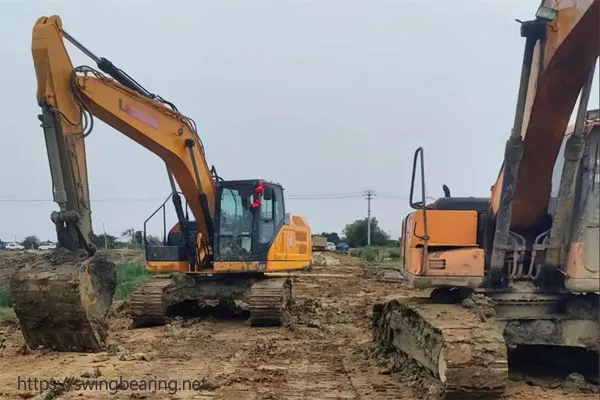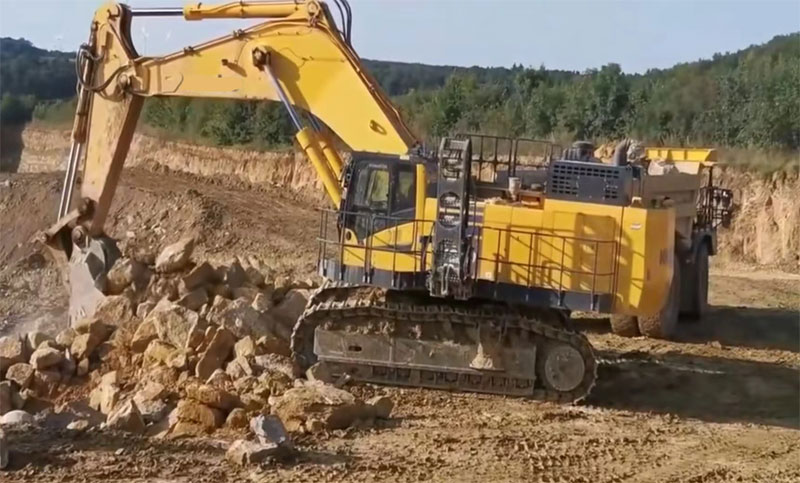
In the ever-evolving world of construction, machinery plays a pivotal role in ensuring efficiency, safety, and precision. Among these machines, the excavator stands out as an indispensable tool, and at the heart of its functionality is the boom. The excavator boom is not just a structural component; it is the lifeline that enables the machine to perform a myriad of tasks.
The excavator boom is the long, arm-like structure that extends from the machine’s base to its working end. Typically constructed from high-strength steel, the boom is designed to withstand the immense stresses associated with lifting, digging, and moving heavy materials.
The boom connects to the excavator’s base via a slew ring, which allows for 360-degree rotation, offering unparalleled flexibility and maneuverability on the job site.
The primary function of the excavator boom is to provide extended reach and depth. This capability is crucial for tasks such as digging deep trenches, excavating large volumes of earth, and reaching over obstacles.
For example, in urban construction projects where space is limited, the boom’s extended reach allows operators to work efficiently without repositioning the machine frequently.
Modern excavator booms are equipped with advanced hydraulic systems that offer precise control over movements. These systems allow operators to perform delicate tasks such as placing pipes, lifting fragile materials, and working in confined spaces with remarkable accuracy.
The precision provided by the boom is essential for tasks that require meticulous attention to detail, such as landscaping or installing utilities.
The boom can be fitted with various attachments, including buckets, breakers, grapples, and augers, to perform a wide range of functions. This versatility makes the excavator a multi-functional tool that can handle diverse construction applications.
For instance, a quick-change coupler allows operators to switch between a digging bucket and a hydraulic hammer within minutes, significantly enhancing productivity.
The boom’s robust construction allows it to bear substantial loads, making it ideal for lifting and transporting heavy materials.
This load-bearing capacity is particularly beneficial in tasks such as loading dump trucks, moving large boulders, and handling construction debris.
By enabling quick and efficient completion of tasks, the excavator boom contributes significantly to the overall productivity of the construction site.
It reduces the need for manual labor, speeds up project timelines, and minimizes operational costs. For example, an excavator with a well-maintained boom can dig a foundation trench in a fraction of the time it would take a crew using manual tools.
The most common type, ideal for general excavation work. Standard booms are designed for a balance of reach, depth, and lifting capacity, making them suitable for a wide range of applications.
Designed for tasks that require extended reach, such as dredging or demolition work. These booms are longer than standard booms and provide additional reach, which is essential for projects that involve working over obstacles or at significant distances.
Shorter but more robust, designed for heavy-duty digging and lifting. Mass excavation booms are built to handle large volumes of material quickly, making them ideal for tasks such as mining, quarrying, and large-scale earthmoving.
Offers enhanced flexibility with the ability to change the angle of the boom. This type of boom is particularly useful in confined spaces where maneuverability is crucial, such as urban construction sites or interior demolition projects.
Conduct regular inspections to check for signs of wear, cracks, or damage. Pay special attention to high-stress areas such as the boom’s pivot points, hydraulic connections, and weld joints.
Use non-destructive testing methods such as ultrasonic testing to detect internal defects that may not be visible to the naked eye.
Ensure all moving parts are adequately lubricated to prevent friction and wear. Use the recommended lubricants as specified by the manufacturer and follow a strict lubrication schedule.
Pay special attention to the boom’s pivot points and hydraulic cylinders, as these areas are prone to wear.
Regularly check the Hydraulisk system for leaks, pressure drops, and contamination. Ensure the hydraulic fluid is at the proper level and replace hydraulic filters as needed.
Contaminated hydraulic fluid can cause severe damage to the boom’s hydraulic components, leading to costly repairs.
Keep the boom clean from dirt, debris, and other contaminants that could cause damage or reduce efficiency.
Use high-pressure washers to remove stubborn dirt and inspect the boom for hidden damage after cleaning. Ensure that the boom is dry after washing to prevent rust and corrosion.
Schedule regular professional servicing to detect and address any potential issues before they become major problems. Professional technicians can perform detailed inspections, diagnose issues, and recommend corrective actions to ensure the boom’s optimal performance.

The construction industry is continuously evolving, and so is the technology behind excavator booms. Innovations such as telematics, remote diagnostics, and advanced materials are shaping the future of excavator booms.
For example, the use of high-strength, lightweight materials such as carbon fiber composites can reduce the boom’s weight, enhancing maneuverability and fuel efficiency.
Additionally, smart sensors and telematics systems can provide real-time data on the boom’s performance, allowing operators to make informed decisions and optimize efficiency.
The excavator boom is a vital component that greatly enhances the functionality, efficiency, and versatility of an excavator. By understanding its importance, types, and ensuring proper maintenance, construction professionals can maximize the performance and lifespan of their machines.